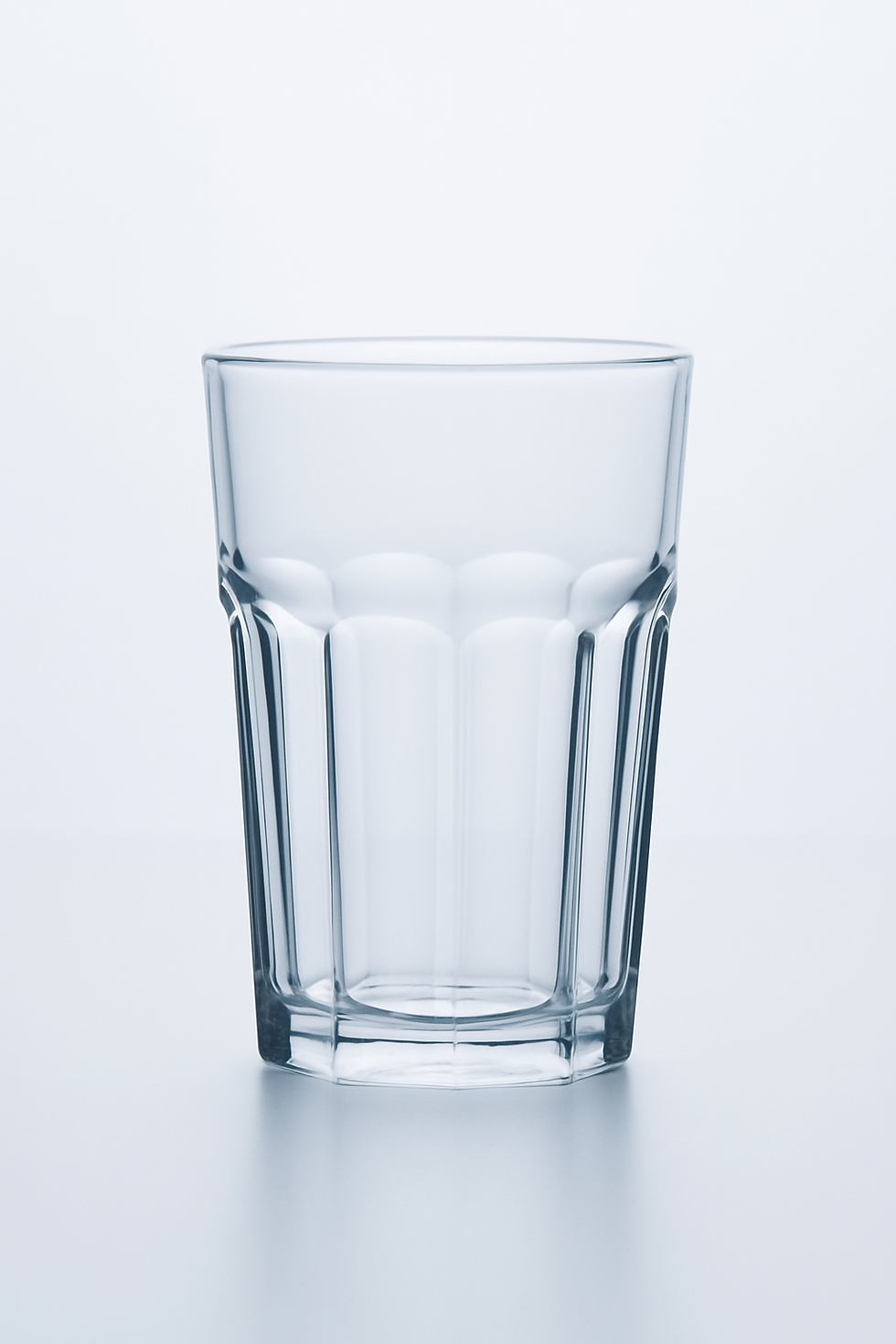The Stress Cup Revisited: How We Carry, Spill and Rebuild.
- David Yates

- Jun 19
- 7 min read
We often think stress is about big moments, but it’s the small, hidden layers that quietly fill us up each day.
The Stress Cup is a simple, powerful way to understand why we sometimes overflow, even when nothing dramatic has happened.
Before exploring how we adapt, recover and renew, it helps to see how this unseen cup shapes how we show up in our lives.

The Hidden Cup We All Carry.
Some days, it doesn’t take much..
A sharp reply.
A spilt coffee.
A missed call that feels bigger than it should.
You catch yourself reacting in ways that don’t match who you believe you are, snapping, withdrawing, or feeling your eyes sting at precisely the wrong moment.
It often isn’t about that moment at all, it’s actually about everything that came before it.
This is where the metaphor of the Stress Cup becomes quietly powerful.
Imagine you are carrying an invisible cup with you every day. Into it goes everything from work stress, family responsibilities, financial concerns, poor sleep, noise, guilt to uncertainty.
Some of it is loud and obvious.
Some of it builds quietly, in the background, through the effort it takes to stay composed when things feel difficult.
No one’s cup is bottomless. When it fills, it spills.
Sometimes that overflow looks like tears, or irritability, or forgetfulness, or feeling strangely tired before the day begins.
It’s not weakness, It’s a signal.
Before reading further, pause for a breath and ask yourself: “What’s in my cup today?”
Now list three things you’re carrying.. without self- judgement.

Overflow Is Feedback, Not Failure.
We are often taught to judge ourselves harshly when we react. “Why did I lose my temper?” “Why am I crying over something so small?” “Why can’t I cope like I used to?”
It is easy to think the problem is the reaction itself, but often, the reaction is simply the final drop in a cup that has been quietly filling for days or weeks.
The comment, the traffic jam, the unexpected request are rarely the true cause.. they are what finally makes what is already full visible.
This aligns with polyvagal theory (Stephen Porges), which describes how our nervous system shifts into states of defence when we sense threat, even subtly.
Overflow isn’t random; it’s the nervous system trying to signal that it can no longer maintain calm under current pressures.
Once we see it this way, our responses can shift.
We move from judgement to curiosity, we can ask, gently, “What’s in my cup right now?” instead of, “What is wrong with me?”
A lived example.
A senior manager in a consultancy described snapping at a colleague over a minor delay.
Later, she realised she hadn’t slept well for three nights, was worrying about a parent’s health and was managing a high-stakes project deadline.
Recognising her “full cup” allowed her to take a walk, recalibrate and apologise sincerely, turning the incident into a moment of relational repair rather than further tension.
“Think of a recent reaction you regret. What was already in your cup that day?”
Overflow is not failure. It is feedback. One of the most powerful kinds we can receive.

The Power of Naming: How Shared Language builds Resilience.
Understanding your own Stress Cup is one thing.
It helps you recognise your limits and notice when your load is growing, but if the people around you don’t understand the same language, it can still feel lonely.
Your reactions may be misread, your silence might be mistaken for disinterest and weight you carry remains unseen.
This is why shared language matters.
Being able to say, “My cup is nearly full today,” or “I’m at 80% right now, can you help please,” can open a quiet, respectful space without needing to explain every detail.
It allows others to respond with understanding instead of confusion and without expecting lengthy, deep conversation in a moment of necessary focus.
When this language becomes part of how families, teams and organisations communicate, it changes the atmosphere.
Instead of assumptions, people ask questions.
Instead of misreading each other’s behaviour, people pause and offer care.
Hypothetical Team Case study.
During a team meeting in a busy week, a team lead began a meeting by saying, “Before we get started.. I’m running close to full today, but I’m here.”
This short, honest statement shifted the meeting’s tone.
The team moved through agenda points with clarity and others felt permission to share their current capacity, reducing hidden strain while maintaining momentum.
At work, it might sound like:
“I’m close to full, can we shift this to tomorrow?”
“How’s everyone’s waterline today?”
“I have capacity right now; can I take something off your plate?”
At home, it might be a child learning to say,
“I feel full,” instead of shutting down or lashing out.
“Try using the phrase ‘My cup is full today’ once this week, with someone you trust.”

Small shifts, Lasting change: Expanding your Cup.
Resilience is not just a mindset, it is a skill set.
Most of us were never taught when we were young how to manage stress in a sustainable way.
We learned to suppress it, to power through, to stay silent, to keep going until something finally breaks.
But emotional capacity is not fixed.
Your cup can be strengthened and expanded, gently and steadily, through small, practical shifts.
Marginal Gains: The 1% Philosophy.
This is where the philosophy of marginal gains comes in.
Research in behavioural science and habit formation (James Clear, BJ Fogg) shows that small, consistent improvements compound significantly over time.
You don’t need to overhaul your life overnight. You simply need to tilt it gently back toward balance, one small decision at a time:
Protect twenty minutes for a walk instead of scrolling.
Say “no” once this week where you would usually say “yes.”
Name your overwhelm aloud instead of carrying it in silence.
Move sleep or movement slightly higher on your priority list.
Cancel something that can wait.
These small actions, repeated consistently, become habits. Habits shape culture. Culture, whether in families or organisations, is what creates a resilient environment that holds people, not just tasks.
“What is one 1% shift you could make this week to lower your waterline?”

The Goldilocks Zone: When Stress.. Helps!
Not all stress is bad.
This often surprises people, especially when most conversations about stress focus on burnout, anxiety and overload, but there is a kind of stress that energises, sharpens focus and propels us toward what matters.
This is eustress.
The quiet thrill before a presentation, the productive tension of solving a challenge, the alertness that comes when stakes are just high enough to feel meaningful.
The Yerkes-Dodson Law illustrates this well, performance increases with physiological or mental arousal (stress) but only up to a point, beyond which performance decreases.
The sweet spot, the Goldilocks Zone, is where challenge meets capacity.
Finding your Goldilocks Zone is not a one-time achievement.
It changes daily, influenced by sleep, health, hormones, emotional load, environment and the stories you carry.
Some days, you wake ready. Other days, you feel full before the day even begins.
Check-in with yourself today:
Am I under-challenged and drifting?
Am I enhanced by this stress?
Am I overwhelmed and fraying?
Resilience is learning to notice these shifts and gently recalibrate.
Barriers: Why we Resist recognising Our Cup.
Even with understanding, many people resist acknowledging when their cup is full.
Common barriers include:
Perfectionism: Belief that rest is failure.
Cultural Conditioning: Valuing productivity over well-being.
Fear of Judgement: Worry about appearing weak or incapable.
Disconnection: Being so busy you stop noticing your own signals.
The antidote is not shame but gentle awareness.
When noticing your resistance is part of the work, it allows you to explore your relationship with rest, capacity and boundaries.
“What stories do I tell myself about rest and capacity? Where might I be resisting acknowledging when I am full?”

Collective Resilience: From Self-Care to Systems Care.
The Stress Cup metaphor is not just personal. It applies to teams, organisations, families and communities.
In teams and organisations:
Too much pressure leads to burnout and disengagement.
Too little challenge creates drift and stagnation.
The Goldilocks Zone for teams is where people feel challenged and supported, where trust grows and where people can contribute meaningfully without sacrificing their health.
This requires leadership that models and normalises conversations about capacity, rest and sustainable pacing.
It requires cultures that understand human limits are not weaknesses but realities and that investing in well-being is inseparable from investing in performance.
In families:
Shared language around stress teaches children that emotions are not shameful and that naming overwhelm is not weakness.
It builds trust, emotional literacy and the safety to ask for help.
Resilience, when practiced collectively, becomes part of the atmosphere people breathe together. It becomes a quiet, daily practice that grows the tools we need to prevent crises, instead of reacting to them.
A Pause Before You Continue.
Before you move on to the next stage of your learning and living, pause for a moment and ask:
“What is already in my cup today?”
Not in theory, but honestly:
Is it sleep deprivation?
The tension of uncertainty?
Unspoken responsibilities?
The quiet fatigue of carrying things alone?
Then ask:
“What small shift could I make to lower my waterline by 1% today?”
It might be a walk. A proper meal. Naming how you really feel. Saying “no” or “not yet.” Letting yourself be seen.
Resilience begins here, with small, repeatable acts of self-awareness and self-respect, before grand strategies or systems change.
The Doorway to Deeper Resilience.
The Stress Cup is the foundation for everything that follows.
Before you explore the Four Domains of Resilience (biological, psychological, social and spiritual,) understanding how your load builds and spills, how it can be lightened and managed, is key.
This is not about becoming unbreakable. It is about self-awareness, learning when to bend, when to rest and how to rise again, clear-eyed and calm.
Because in the end, resilience is not about pushing through at all costs. It is about carrying what you already have with more balance, clarity and kindness, so you can keep returning to what matters most.
If you feel full, or flat, or somewhere in between, you are not broken and you are not behind. You are simply human, learning to live gently and sustainably in a world that often asks us to do the opposite.
“Resilience isn’t about being unbreakable. It’s about knowing how to bend, how to rest and how to rise again.”

What Comes Next.
Next in the series, we will explore how this foundation links to the Four Domains:
🌱 Biological: Sleep, Movement and Nourishment and the body’s 8th sense, Interoception.
🧠 Psychological: Managing thoughts and emotions, attention.
🤝 Social: Connection, boundaries and relational resilience.
🕊️ Spiritual: Purpose, meaning, values that sustain us.
Together, these domains will help you not only carry your cup but expand its capacity, reduce unnecessary weight and live with a clearer, kinder and more resilient rhythm.

Comments